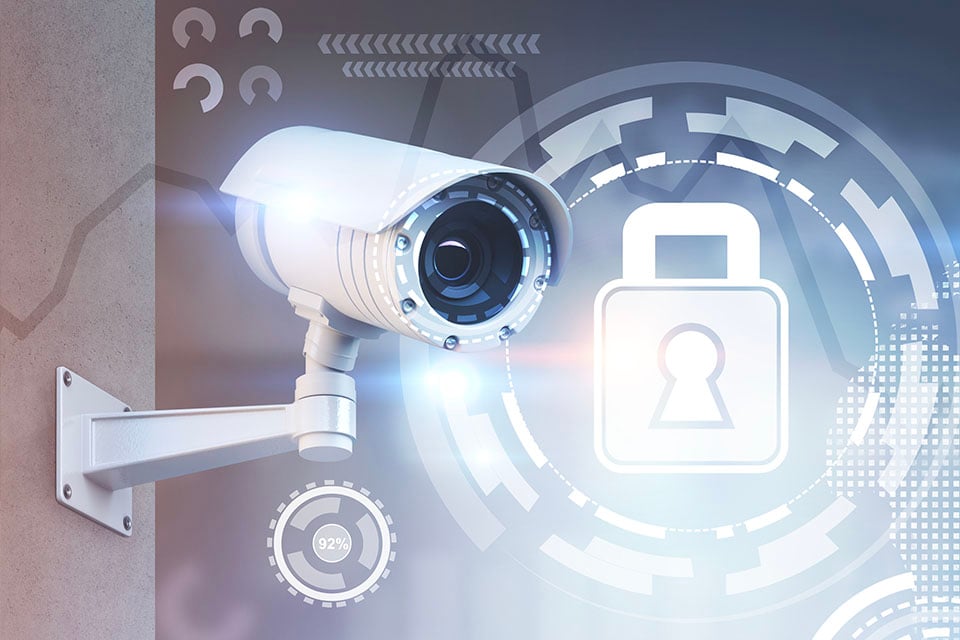Introduction
Security cameras have come a long way from their analog origins. Today, they are sophisticated devices equipped with high-definition video capture, remote access, and even artificial intelligence capabilities. While they undoubtedly enhance our security and situational awareness, they also introduce a new set of challenges in the form of security camera cyber risks.
This blog post explores the growing concerns surrounding the cybersecurity of surveillance systems, their vulnerabilities, and the measures you can take to safeguard your privacy and data.
The Rise of Smart Surveillance
In recent years, the use of smart security cameras has surged, with homeowners, businesses, and even governments leveraging their benefits. These cameras offer real-time monitoring, cloud storage, and mobile app integration, enabling users to keep an eye on their properties from anywhere. But as these systems become smarter and more connected, the risks of cyber threats increase.
Vulnerabilities in Security Cameras
Security cameras, like any other connected device, are susceptible to various vulnerabilities that hackers can exploit. Here are some of the most common security camera cyber risks:
Weak Passwords: Many users neglect to change the default passwords on their security cameras, making them easy targets for cybercriminals. Hackers can easily find lists of default passwords online and gain unauthorized access to these devices.
Outdated Firmware: Manufacturers frequently release firmware updates to patch security vulnerabilities. Failure to update your camera’s firmware can leave it exposed to known exploits.
Insecure Remote Access: Remote access to your security cameras is a great convenience, but if not properly secured, it can be a major risk. Weak or default login credentials can provide hackers with a direct path to your cameras.
Lack of Encryption: Data transmitted between your camera and the cloud, or between your camera and your mobile app, should be encrypted. Without encryption, eavesdroppers can intercept sensitive information.
Unsecured Cloud Storage: If your camera’s cloud storage is not properly secured, hackers might gain access to your recorded footage and sensitive data.
Real-World Security Camera Hacks
The vulnerabilities mentioned above are not just theoretical. There have been numerous documented cases of security camera cyber risks becoming a harsh reality for unsuspecting users. Some notable examples include:
Peeping Tom Incidents: Unauthorized individuals gaining access to home security cameras and spying on families.
Data Breaches: Cybercriminals breaching the cloud storage systems of security camera manufacturers and accessing users’ recorded footage.
Ransomware Attacks: Hackers locking users out of their own security cameras and demanding a ransom for access.
Distributed Denial of Service (DDoS) Attacks: Compromised security cameras being used in botnets to launch DDoS attacks on other targets.
Protecting Your Security Cameras from Cyber Risks
Now that we’ve explored the risks, it’s crucial to understand how to protect your security cameras from cyber threats. Here are some essential steps you can take to enhance the cybersecurity of your surveillance system:
- Change Default Passwords
The first and most critical step is to change the default passwords on your security cameras. Use strong, unique passwords that combine letters, numbers, and symbols. Avoid easily guessable information like birthdays or common phrases. - Regularly Update Firmware
Manufacturers release firmware updates to fix vulnerabilities and enhance security. Make sure to keep your security camera’s firmware up to date. Check for updates regularly or enable automatic updates if the option is available. - Secure Remote Access
If you need remote access to your cameras, ensure that it is secure. Use strong, unique passwords for your camera’s login and consider enabling two-factor authentication (2FA) if supported. Additionally, limit access to trusted devices and networks. - Encrypt Data
Verify that data transmitted between your camera and cloud storage or your mobile app is encrypted. Look for cameras and apps that use secure protocols like HTTPS. - Protect Cloud Storage
If your cameras use cloud storage, opt for reputable providers with strong security measures in place. Implement strong passwords and enable 2FA for your cloud storage account. - Network Security
Secure your home or business network with a strong router password and encryption. Regularly update your router’s firmware and employ network segmentation to isolate your IoT devices, including security cameras, from your main network. - Regular Auditing
Regularly audit your security camera settings and access permissions. Remove any unnecessary accounts and disable unused features. - Consider a Firewall
Consider using a firewall to filter traffic to and from your security cameras. This can help prevent unauthorized access. - Educate Yourself
Stay informed about the latest cybersecurity threats and best practices. Education is your first line of defense against evolving security camera cyber risks.
Conclusion
Security cameras play a vital role in enhancing security and providing peace of mind, but they are not immune to cyber risks. It’s essential for users to be proactive in protecting their surveillance systems from potential threats. By following the recommended security practices and staying vigilant, you can enjoy the benefits of security cameras without compromising your privacy and data.
In the digital age, safeguarding your security cameras is not just a choice; it’s a necessity. Take the necessary steps today to ensure that your surveillance system remains a tool for protection, not a vulnerability to exploitation.


